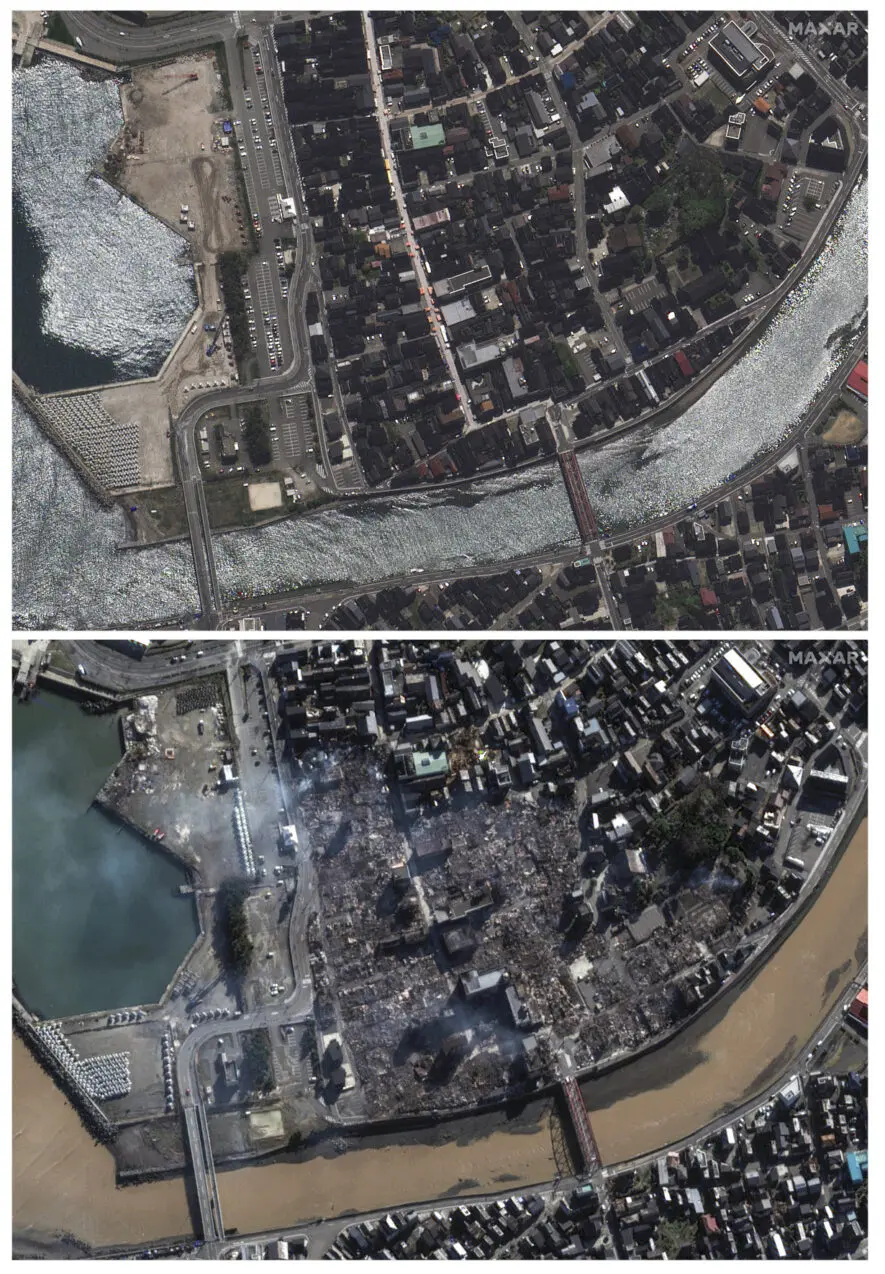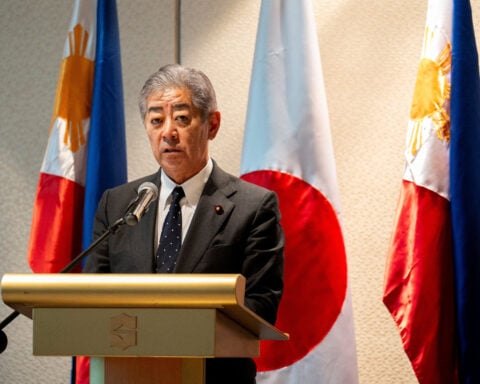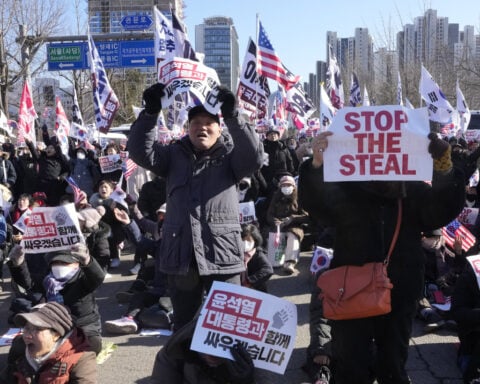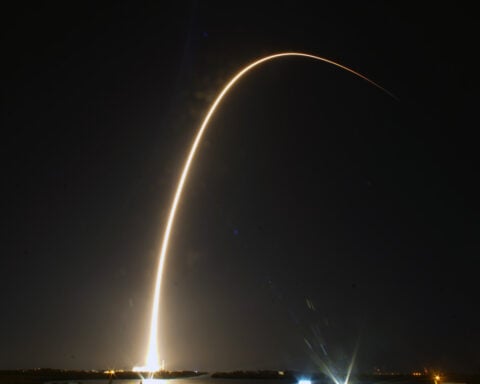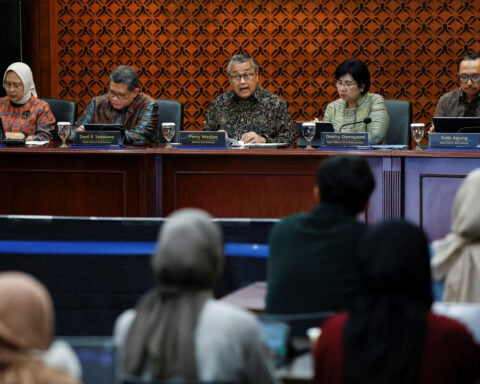SUZU, Japan (AP) — Rescuers braved the cold in a race against time as they searched for survivors along Japan's western coastline Thursday after a powerful earthquake earlier in the week smashed homes and left at least 78 people dead and 51 missing.
A downpour and possible snow were expected, raising the risk of landslides. A list of those officially missing released overnight grew from 15 to 51 people in three cities, including a 13-year-old boy. Some earlier reported missing have been found but more names were coming in, officials said.
Ishikawa prefecture and nearby areas were shaken by more aftershocks, adding to the dozens that followed Monday's magnitude 7.6 temblor centered near Noto, about 300 kilometers (185 miles) from Tokyo on the opposite coast. The quake set off tsunami warnings, followed by waves measuring more than 1 meter (3 feet) in some places.
The first 72 hours are especially critical for rescues, experts say, because the prospects for survival greatly diminish after that.
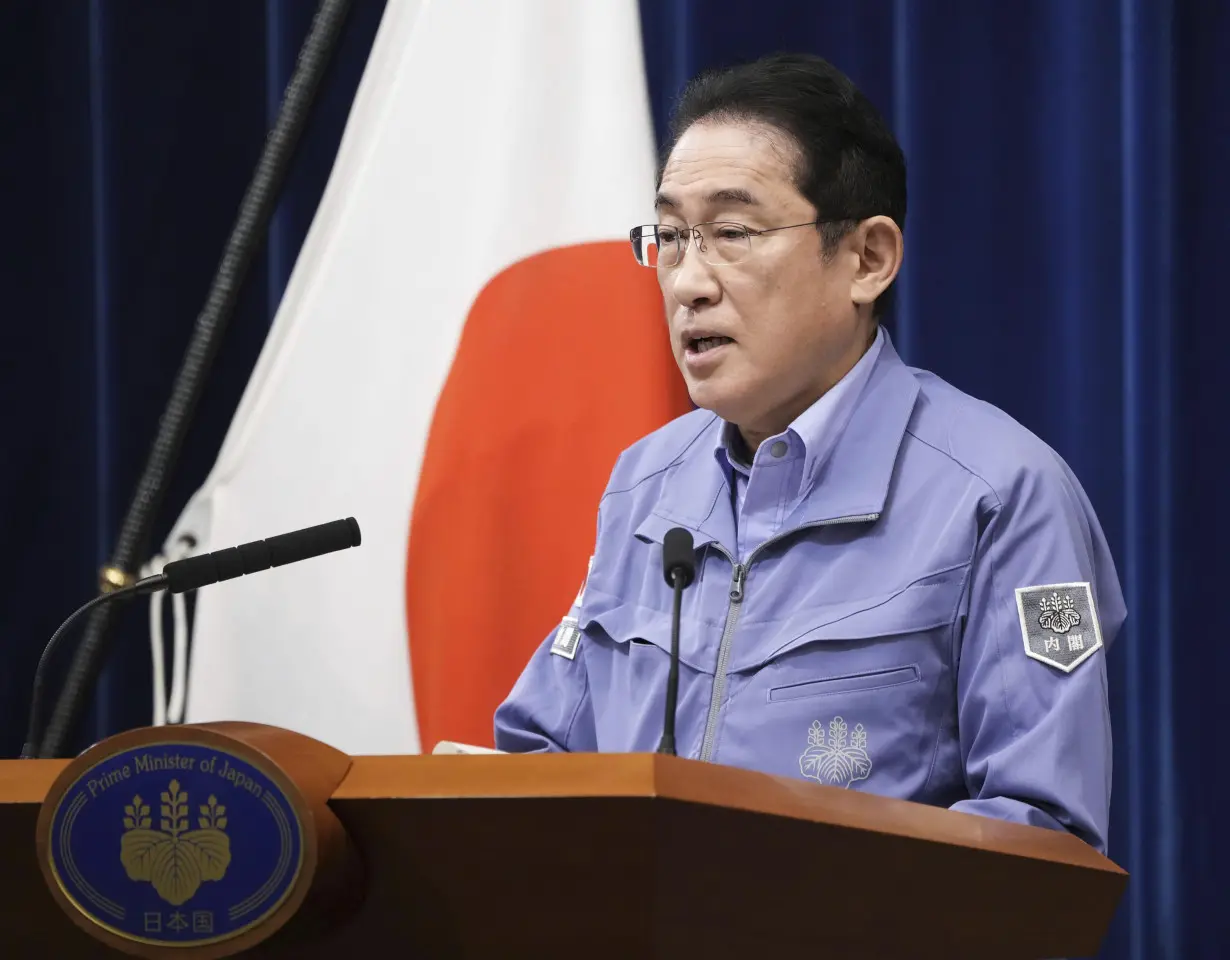
“More than 40 hours have passed. This is a race against time, and I feel that we are at a critical moment,” Prime Minister Fumio Kishida said Wednesday.
On Thursday, he announced that the number of troops dispatched for rescue operations is increasing from about 1,000 to 4,600.
The narrowness of the Noto Peninsula has added to the challenges in reaching some communities. Water, power and cellphone service were still down in some areas.
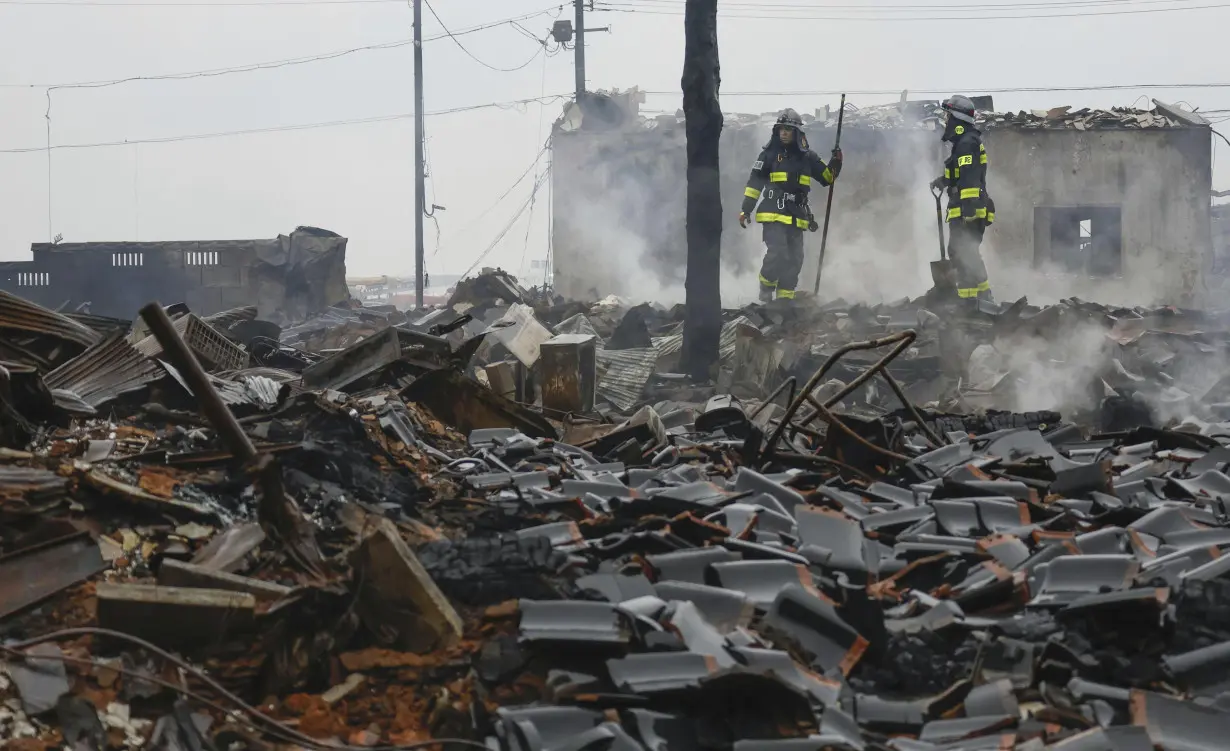
Naomi Gonno said she and her children got out of their house just as it came crashing down.
But her children were screaming “Granma,” and Gonno saw that her mother was trapped under the smashed house, with only her hand visible. She was able to squeeze her way out through a tiny space, Gonno said.
“I can’t believe we're still alive,” she said. “We are living in fear.”
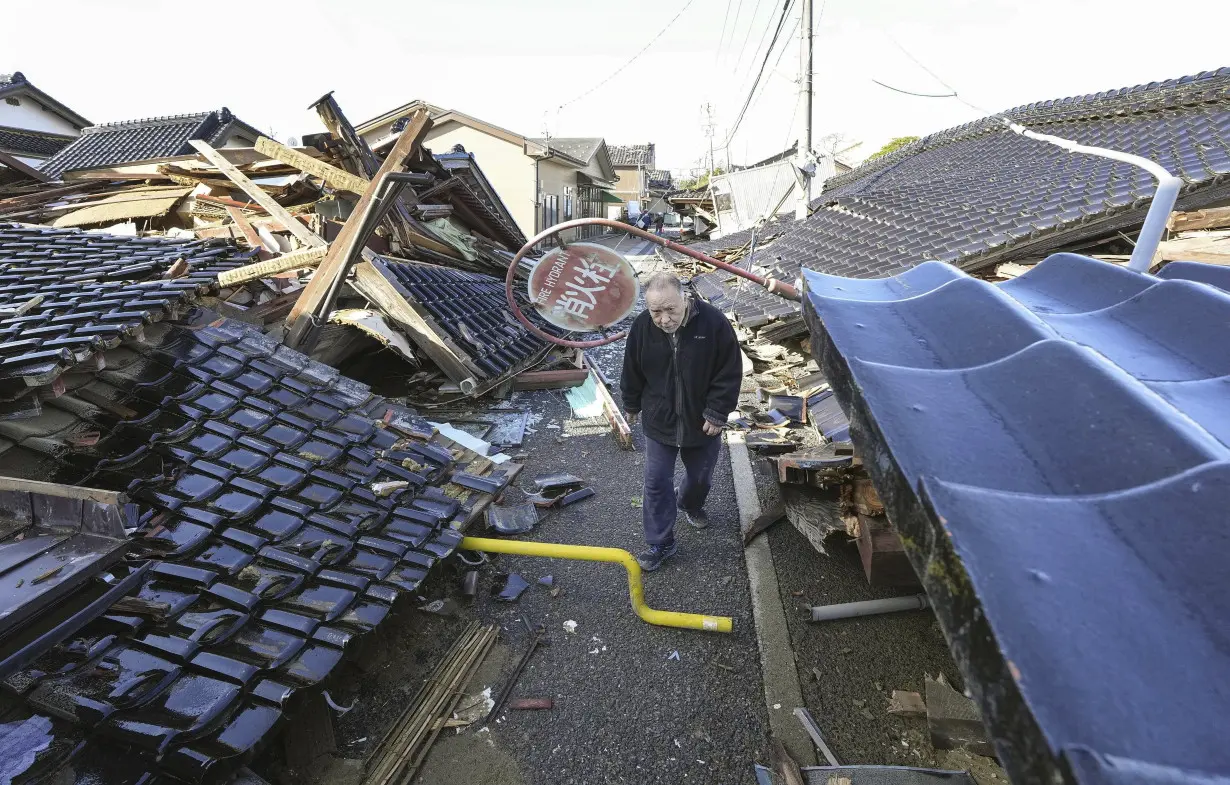
Relief officials handed out water, blankets, food and other supplies. Sniffer dogs joined military personnel and firefighters in the search.
Weather forecasters warned of heavy rain in Ishikawa, leading to worries about landslides and further damage to half-crumbled homes. Temperatures were expected to drop to around 2 degrees Celsius (36 degrees Fahrenheit) overnight.
Ishikawa officials raised the death toll on Thursday to 78. Of the dead, 44 people were in Wajima and 23 in Suzu, with the rest in five towns.
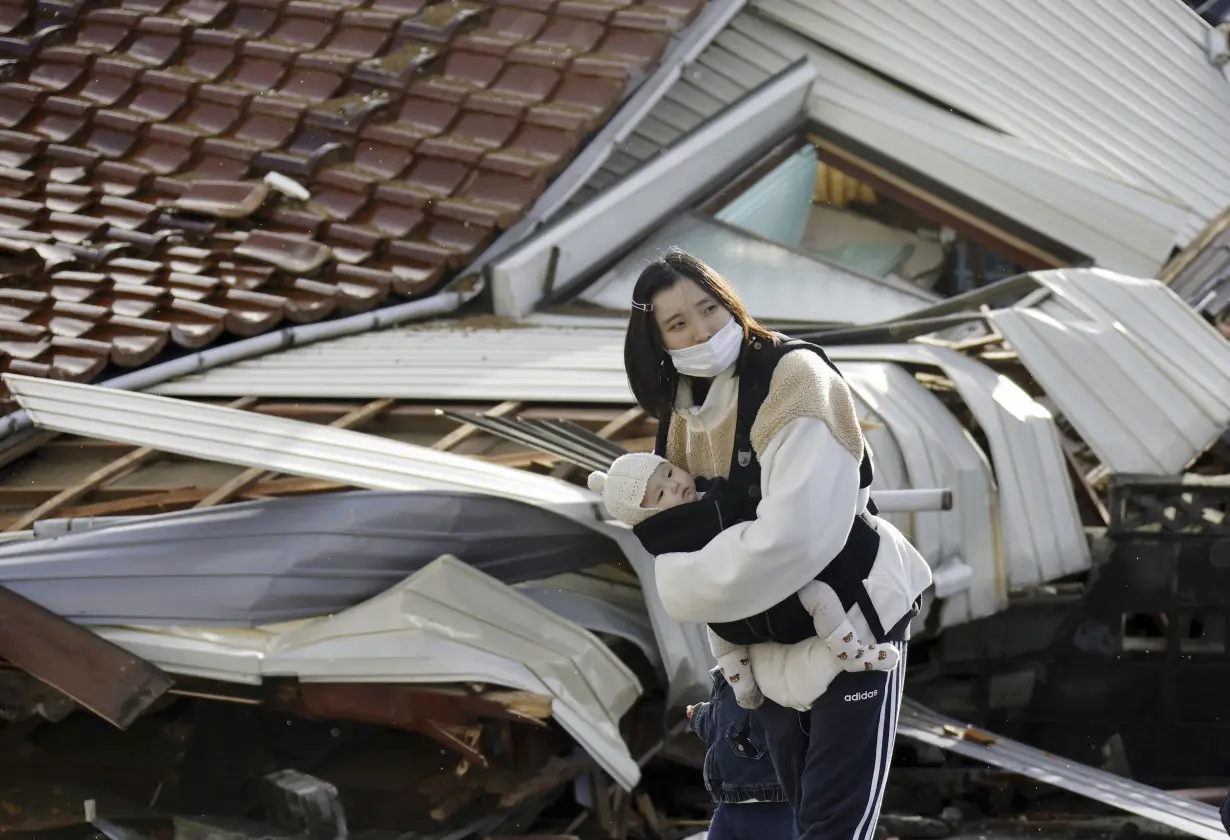
More than 330 people have been injured, at least 25 of them seriously.
Ishikawa Gov. Hiroshi Hase encouraged everyone to use masks, antiseptic and soap to guard against the spread of infectious diseases as evacuees shelter together. Ensuring adequate water supplies and toilets for those who were displaced is a priority, he said.
About 34,000 people are staying in evacuation centers, and some said they were hungry and cold, unable to sleep and afraid.

When Monday's quake hit, Yasuo Kobatake ran out of his house with just one sock on. The shaking threw him to the ground, and a concrete wall came crashing down, barely missing him, he said.
He was eating only rice balls and a few sips of water in paper cups at the elementary school where he and others have been sheltering. They slept on cushions, with no blankets.
“It was so cold. I thought I'd freeze to death,” he said.
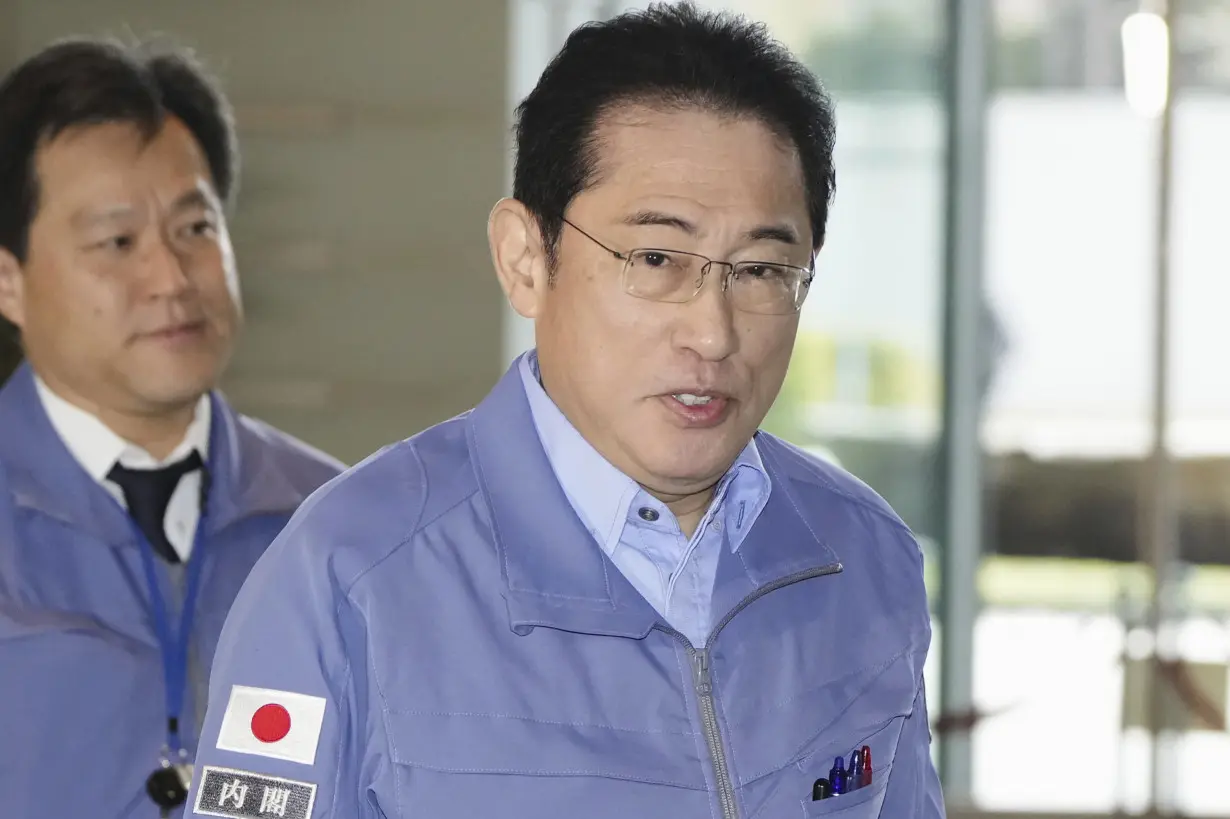
In the aftermath of the quakes and tsunami, boats lay overturned in the sea, roads were blocked by mounds of dirt, and pillars and walls lay scattered from flattened homes. A large fire turned an entire section of Wajima city into ashes.
Officials warned that more major quakes could follow.
Japan is prone to earthquakes, with many fault lines and volcanoes. A massive quake, tsunami and nuclear disaster in 2011 caused widespread damage in northeastern Japan.
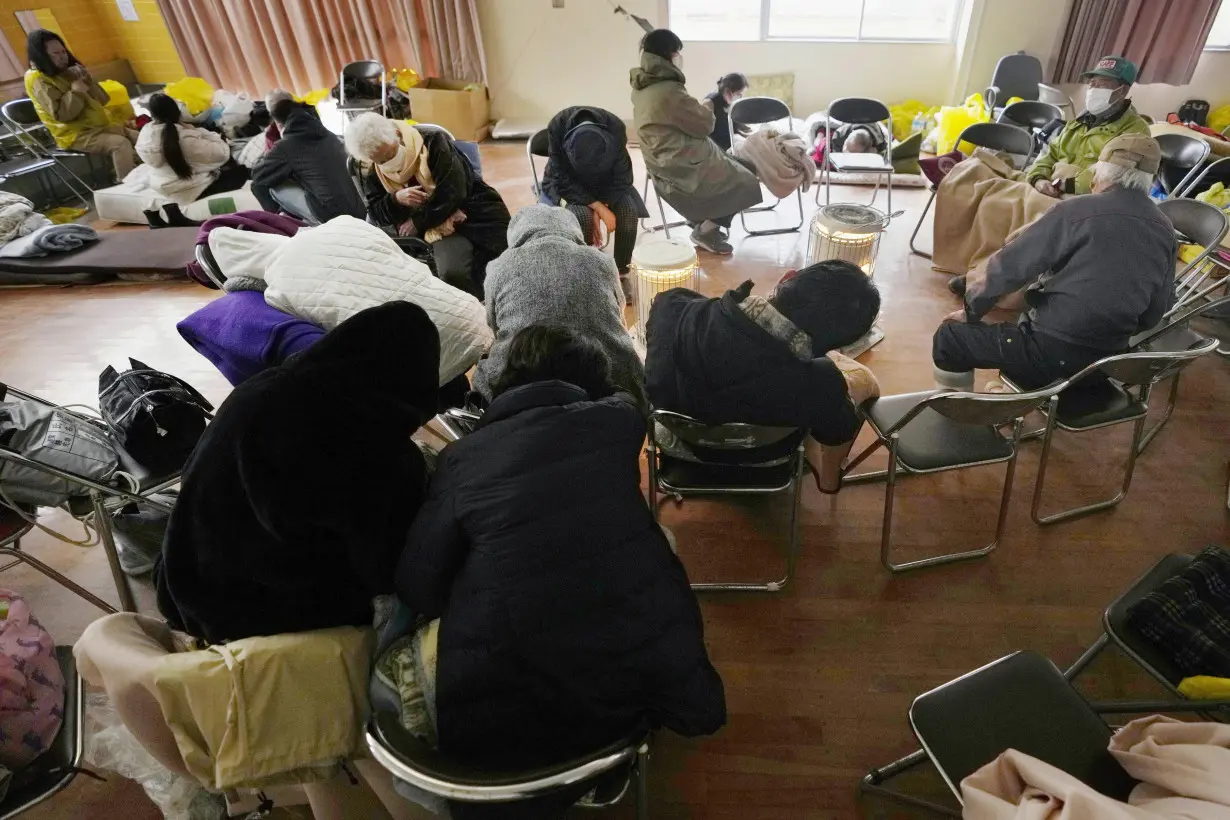
No major problems were reported at nuclear plants after Monday's quake. The Shika nuclear plant in Ishikawa suffered a partial electricity failure, but backup power kicked in, ensuring the critical cooling process continued.
Japan is an organized, conformist and relatively crime-free society where warnings are systematically relayed as a public service. Disaster experts say that’s helping save lives.
Takako Izumi, a disaster science professor at Tohoku University, said time is needed to figure out logistics because roads are often blocked after an earthquake, and large trucks can't get through to deliver aid.
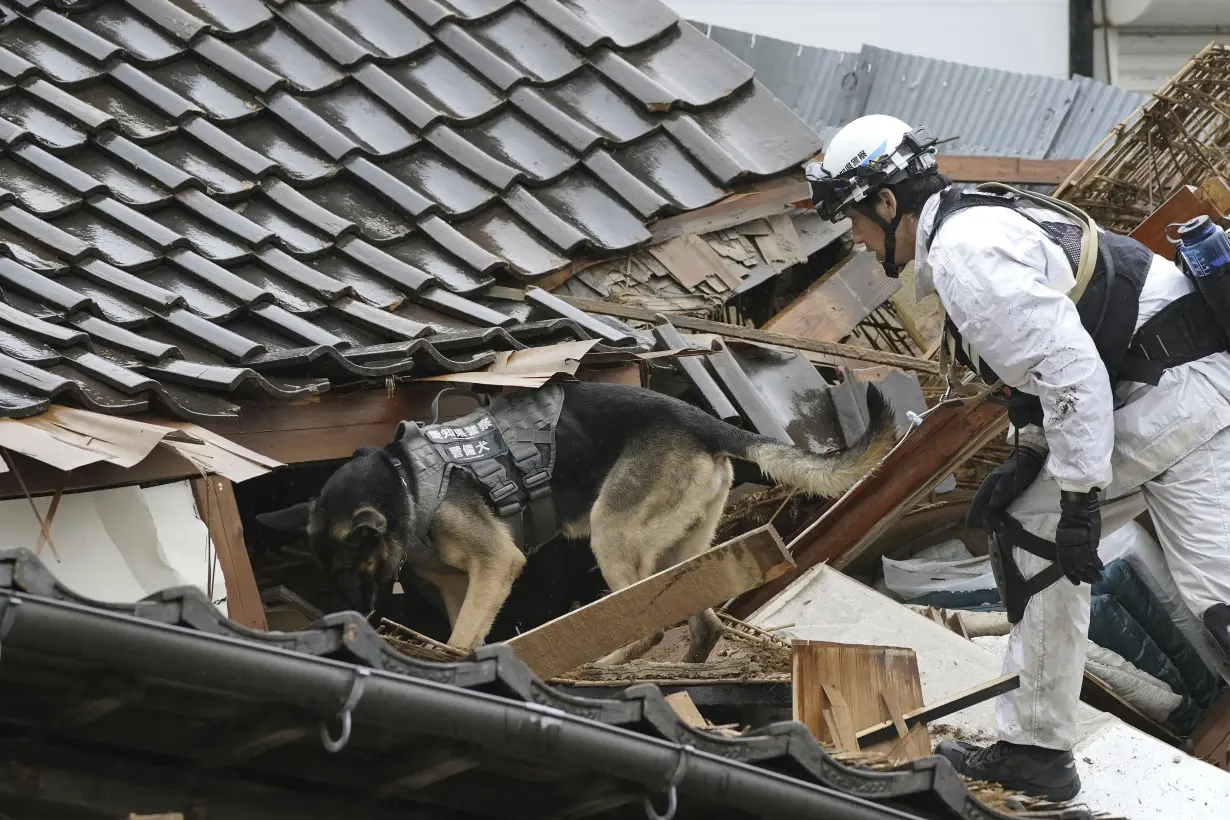
If land routes aren't accessible, aid may have to be dropped from the sky or brought in by boat. The winter cold adds to health risks, and some people may still have not reached an evacuation center, she added.
“We need to accurately assess the damage first. And then a proper response can come, and what's needed can reach the right places,” Izumi said.
___
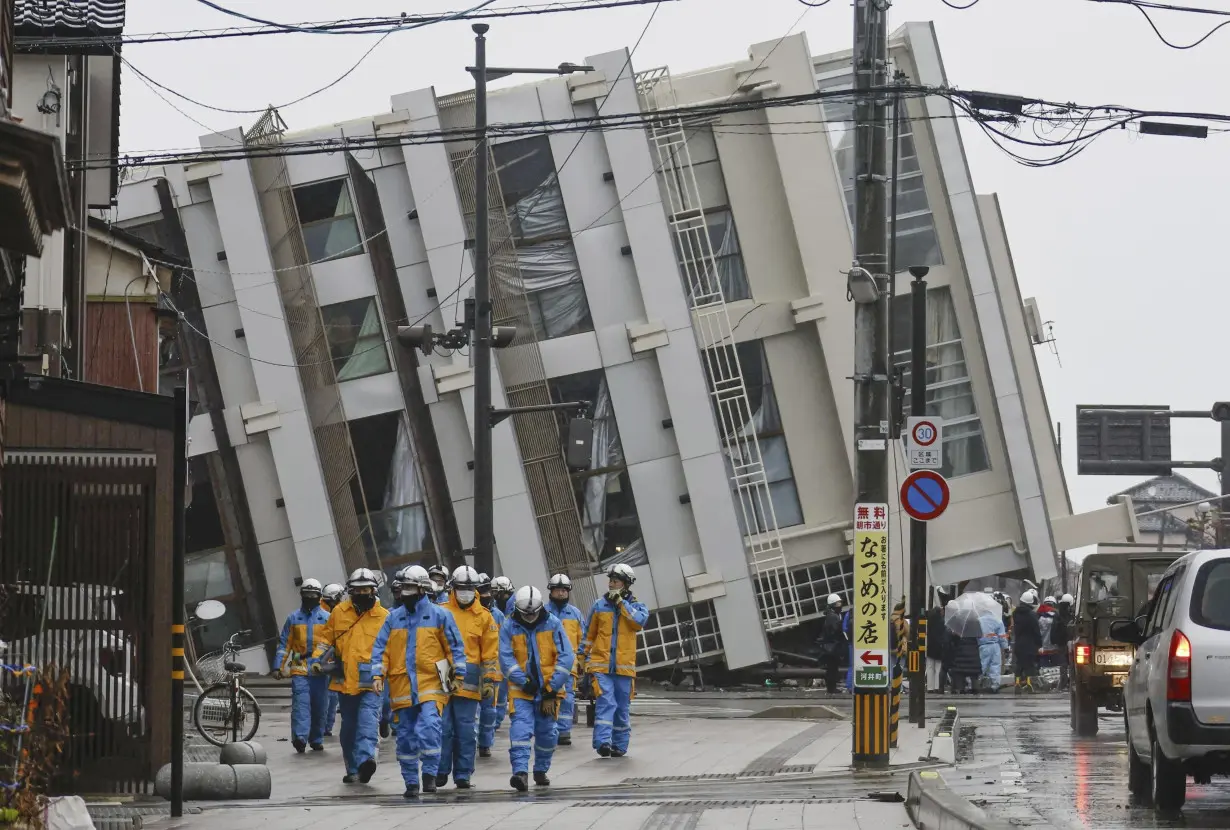
Kageyama reported from Tokyo. Haruka Nuga in Bangkok contributed.
___
Yuri Kageyama is on X: https://twitter.com/yurikageyama
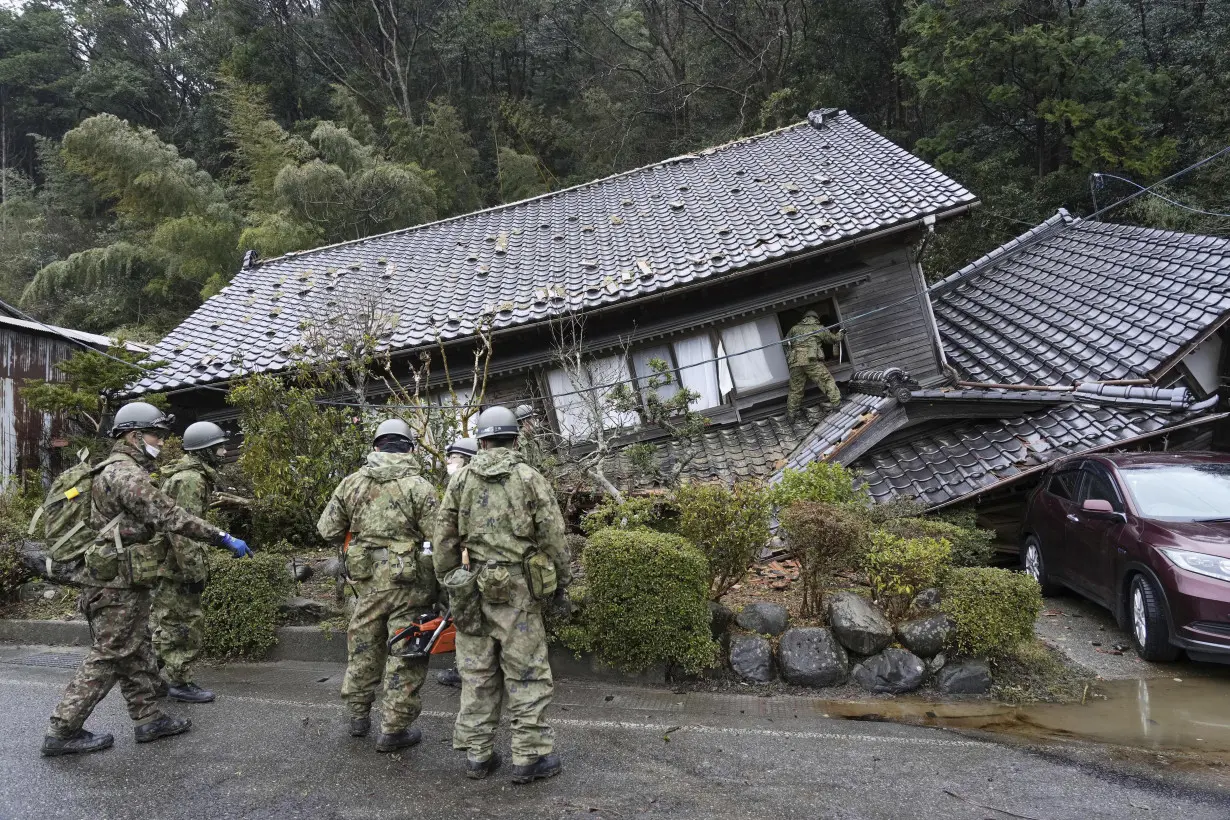
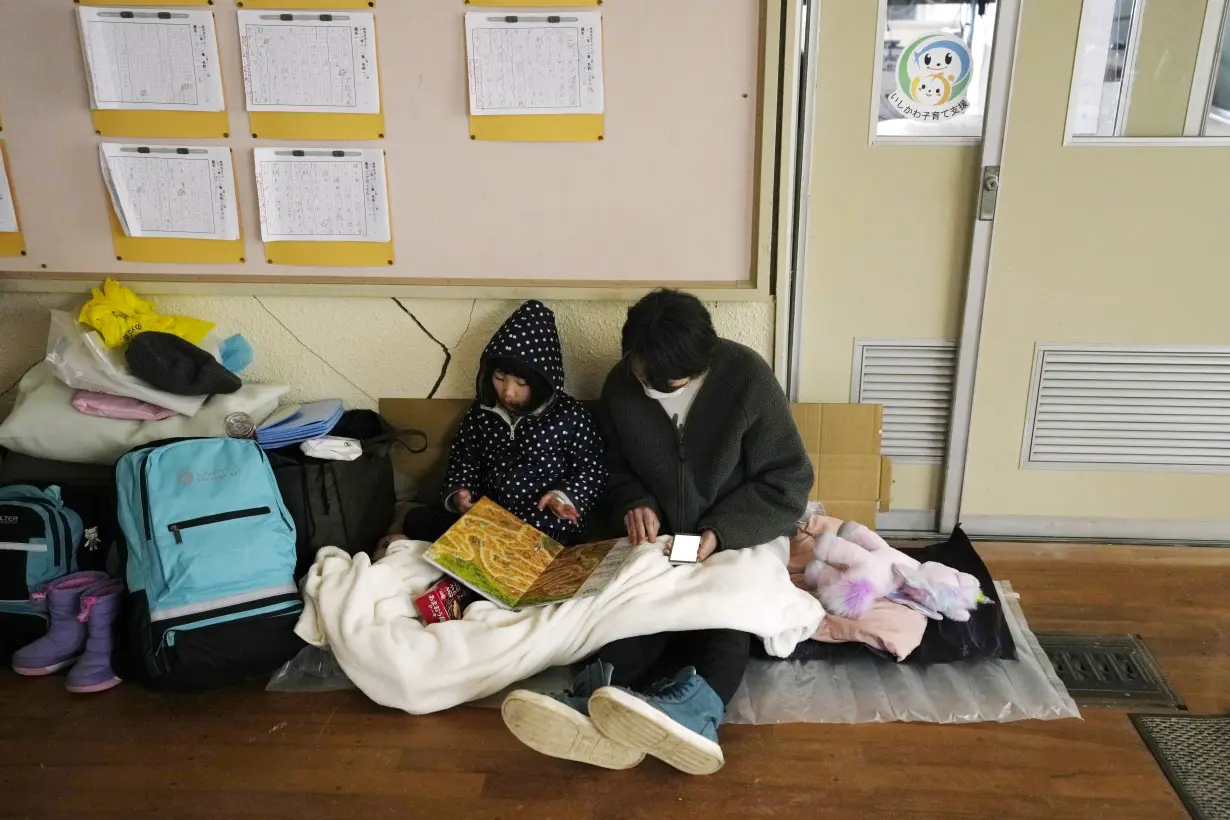

 Italy, Albania, UAE sign deal for energy subsea interconnection
Italy, Albania, UAE sign deal for energy subsea interconnection
 European shares advance as bond yields ease; soft inflation powers UK stocks
European shares advance as bond yields ease; soft inflation powers UK stocks
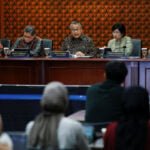 Bank Indonesia delivers surprise rate cut to support growth
Bank Indonesia delivers surprise rate cut to support growth
 Novak Djokovic breaks a tie with Roger Federer for the most Grand Slam matches in tennis history
Novak Djokovic breaks a tie with Roger Federer for the most Grand Slam matches in tennis history
 China's RedNote: what you need to know about the app TikTok users are flocking to
China's RedNote: what you need to know about the app TikTok users are flocking to
 British author Neil Gaiman denies ever engaging in non-consensual sex as more accusers come forward
British author Neil Gaiman denies ever engaging in non-consensual sex as more accusers come forward
